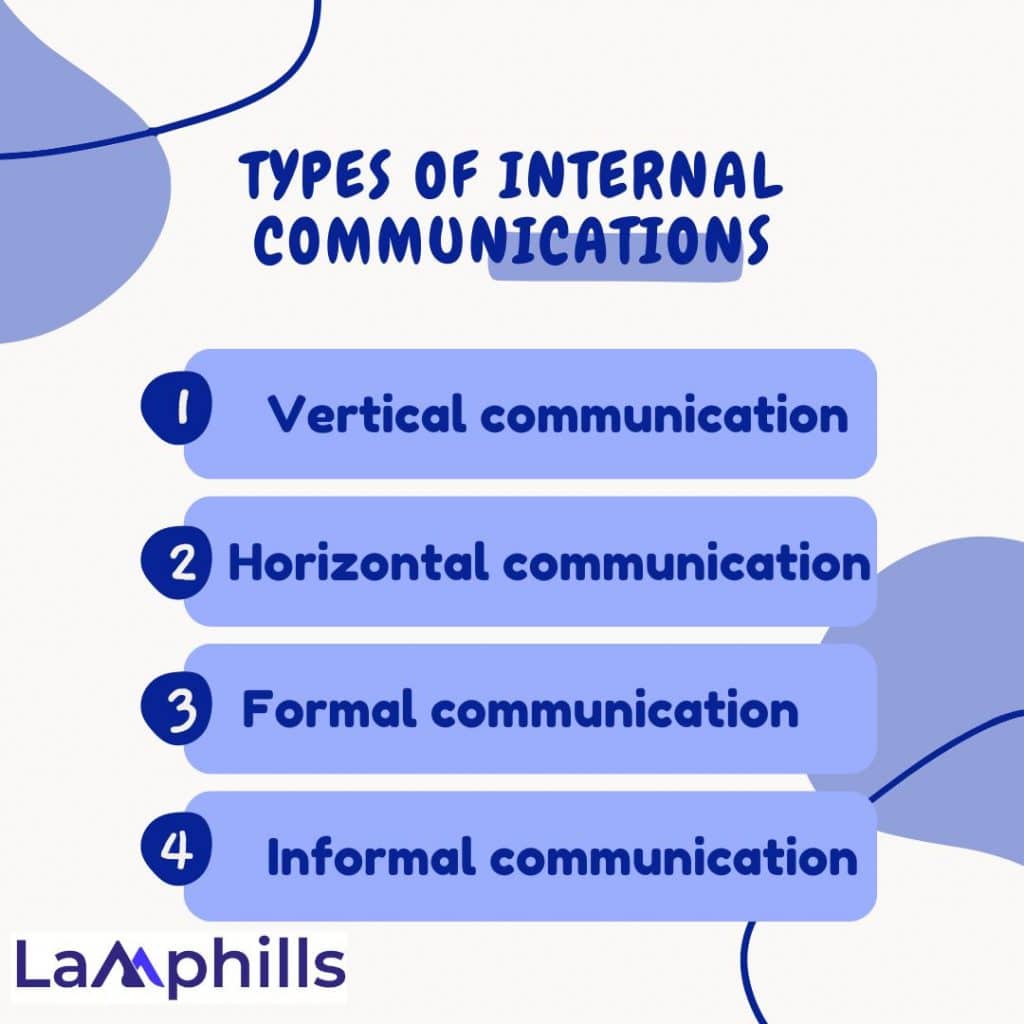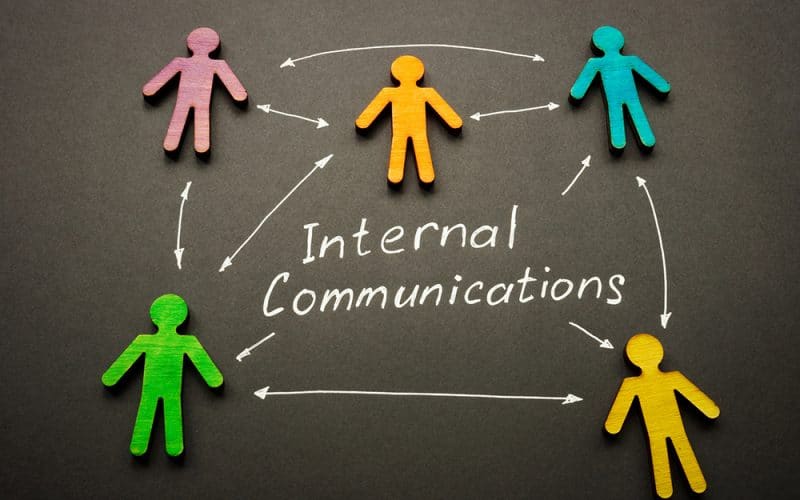Have you ever walked into the office, excited about a new company project, only to realize that the majority of your coworkers have no idea? Internal communications can be like a tiresome game of telephone: the message becomes garbled, the excitement fades, and everyone is left wondering, “Wait, what are we doing again?”
As an Internal Communications Specialist, I’ve witnessed the disastrous consequences of communication breakdowns and disengaged staff. However, I’ve also seen the transforming potential of smart internal communications.
According to a recent Gallup survey, only 15% of employees worldwide are engaged in their jobs. Effective internal communications are critical for increasing employee engagement, building a sense of community, and bringing everyone together around company goals.
But beyond the company publications and meetings, there is a universe of inventive strategies waiting to be discovered. Here, I’ll reveal internal communications’ hidden potential, converting you from a message broadcaster to an engagement architect who can encourage your employees to become brand advocates.
What is Internal Communications?
Internal communications are the strategies and instruments that a corporation utilizes to communicate with its personnel. The idea is to equip employees with the knowledge they need to accomplish their jobs while keeping them focused on the company’s strategic goals. Good internal communication informs, engages, and inspires employees, making it an essential component of workplace management.
In today’s fast-paced work world, where many people work remotely, good internal communications are more important than ever. They eliminate physical barriers between teams, promote a coherent culture, and ensure that all members of the business are rowing in the same direction.
Key Takeaways
- Internal communications are crucial for engaging employees, aligning them with the company’s strategic goals, and enhancing workplace management.
- Through internal communications, a company can establish and propagate its culture, helping to integrate new employees and make the organization attractive to potential hires.
- Internal communications ensure that all employees are well-informed about their roles and responsibilities, which enhances overall company performance.
- Giving employees a voice and listening to their input is vital for fostering an inclusive workplace atmosphere and for continuous improvement of processes and policies.
- During crises, effective internal communication is key to managing the narrative within the organization, maintaining staff morale, and ensuring that operations continue smoothly.
Why is Internal Communications Important?
Developing efficient internal communication is an essential component of any successful organization. Communication is required for numerous roles within a firm, and internal communication provides a range of benefits, including:
#1. Establishing company culture
A firm must establish an identity. A defined culture facilitates new employee integration and makes the organization more enticing to dedicated professionals. Internal communications are one of the most essential components in determining a company’s culture. The way employees engage with one another, both among peers and across organizational tiers, shapes the company’s atmosphere. Effective internal communication contributes to a positive and healthy work environment, allowing employees to perform at their best.
#2. Keeping employees informed
Employees must understand exactly what you expect of them and what their obligations are. Clear lines of internal communication guarantee that all staff members are aware of their responsibilities and deadlines. When employees are unsure of their employer’s expectations, internal communication helps them seek further information to fulfill their goals and preserve corporate performance.
#3. Giving Employees a Voice
It is critical that every employee feels as if their boss is listening to their relevant thoughts while at work. Open communication is also important since it guarantees that employees with good ideas for the organization feel comfortable discussing them and can do so. When the entire firm has procedures in place to allow for proposals, mid and senior-level employees can examine the ideas and identify useful solutions to improve performance.
Companies frequently give formal mechanisms for expressing requests and suggestions, allowing information to flow smoothly up the hierarchy. For example, a salesperson who has an idea for a new way to bundle the products they offer may share it with their supervisor. If the supervisor believes the concept has validity, he or she could approach a senior staff person in charge of making sales package selections. If authorized, the new option might be made available to all salespeople.
#4. Maintaining employee happiness
Maintaining strong staff morale is a critical component of a successful organization. Employees frequently perform better at work when they are happier. Happy employees are also more likely to stay with their current employer, making it easier to retain key employees and reducing the number of open positions to fill, which reduces the overall resources committed to staffing decisions. When attempting to improve company morale, it is critical to provide employees with simple methods of internal communication. Employees feel respected when their employer communicates openly with them.
#5. Crisis Management
If a firm is undergoing a crisis, whether external or internal, it is critical to communicate effectively with employees. Internal communication during a crisis allows a corporation to manage the message it sends to its employees. The messages they deliver through formal channels may need to be adjusted depending on information acquired from more casual encounters with workers to answer any queries or concerns the staff has raised about the situation and to assist them retain a good attitude.
Read Also: Best Steps To Effective PR Crisis Management
#6. Evolving the Workplace
Many successful businesses are always adapting to new circumstances. Companies must adapt to stay current and gain an advantage over competitors as the world changes and so do our interactions within it. When a firm needs to adjust its operations, efficient internal communication ensures that the transition goes as smoothly as possible.
Effective communication with employees serves two purposes in a company’s ongoing evolution. First, employees’ capacity to successfully convey information and ideas to others inside the firm aids in the identification of prospective adjustments to explore. Once executives have made a decision, the communication network efficiently distributes that information to the appropriate staff members.
#7. Controlling how professionals share information
Although free communication is frequently the goal of an internal communication network, there are instances when it is necessary to regulate information flow. By establishing communication channels for private information, a corporation can prevent the dissemination of potentially harmful information. Important information to control could include a bad development that is still being examined, a new product or strategy for a project that top management is contemplating for execution, or private information such as performance reviews.
#8. Improving firm efficiency on a project
Although effective planning is essential for any project, unforeseen problems are common in some undertakings. When these situations emerge, internal communication is an invaluable tool for rapidly and effectively addressing issues and finding solutions. Whether a solution entails relaying concerns to a manager and allowing them to decide how to proceed, or speaking with a peer who has the specialized knowledge or available time to assist, an employee can use internal communication to find a solution and keep the project moving forward.
Types of Internal Communications

Understanding the various styles of communication will help you use internal communication more effectively. The internal communication categories are as follows:
#1. Vertical communication
When employees from two separate organizational levels communicate, they are engaging in vertical internal communication. This might happen in formal contexts, such as internal memos or scheduled staff meetings, or more casually, in a chat between a manager and an employee from their department.
Vertical communication helps you to give staff members instructions and assist them in better grasping what the firm expects of them. It also allows employees to share their wishes and needs with top management. This helps to preserve corporate morale by demonstrating to employees that upper management is listening to them and keeping communication open so that senior staff can understand how to best utilize employees in their field. This enables for more efficient utilization of personnel, boosting overall performance levels.
#2. Horizontal communication
The most prevalent type of communication in most offices is horizontal, which occurs between two employees on the same level of the organizational structure. When two employees assigned to the same project discuss how to divide the workload, they participate in horizontal communication. Effective horizontal communication inside an organization is critical. Along with allowing employees to perform better, it is also critical in team building and generating a strong social dynamic.
#3. Formal communication
Formal communication occurs when a firm employee transmits information to other employees using official structures. Staff meetings, company emails, and employee reviews are common kinds of formal communication. Formal communication is essential for establishing corporate policies and outlining project structures and expectations. This provides a unified knowledge of expectations, as well as an official record of communications.
#4. Informal communication
Informal communication occurs when two or more employees of a company speak or write to each other outside of formal channels. A casual discussion between two employees is informal contact, such as a text or email, that does not adhere to official business policies. Although informal, these forms of communication are nonetheless necessary for a successful business.
They keep employees happy while also allowing staff members to communicate and discuss a project more quickly and effectively than following official procedures. The majority of office discussions are casual.
The Challenges that Internal Communications Teams Face
#1. Lack of employee engagement
Effective communication is nearly impossible in firms when employees are not motivated and engaged.
#2. Improper IC tools
We are all aware that effective communication requires a full-time commitment. However, ensuring that everyone receives all necessary information on time might be difficult. Having the correct tools for the task is crucial for keeping your employees informed and motivated, and app integrations can help with this process.
#3. Information black holes
Information silos are instances in which information becomes isolated and is not efficiently disseminated within an organization. This can be a big difficulty for communications directors, especially in larger firms. According to Cognitive University for Watson Systems SmartSeller, employees spend an average of 2.5 hours per day searching for information, which is just too much—they become trapped in black holes. Effective internal communication capabilities prevent this from happening.
#4. Lack of feedback
Employee feedback is related to employee engagement and satisfaction. If you aren’t getting feedback, it’s possible that your staff don’t feel comfortable sharing or don’t care enough to tell you how they feel. Sending out employee experience questionnaires is an excellent method to encourage your team to speak up, especially when they are anonymous.
#5. There is no method to measure internal communication success
How can you know whether what you’re doing works? Being able to measure your efforts allows you to see where you are succeeding and where you may improve. Internal communications without measurement are like taking a shot in the dark. You’ll never know if you’re connecting with your staff and hitting your targets.
#6. The incorrect communication technology
Having the appropriate technologies in place makes all the difference. Implementing current employee engagement tools is an important step toward resolving workplace communication issues. This is where IT and internal communications collaborate to find and apply the best tools for your organization; the problem is to find common ground so that they can agree. The best practices listed below should assist!
Best Practices For Internal Communications Teams
Let’s take a look at some of the best practices that any HR leader should follow to create an effective internal communications system.
#1. Ensure your messages reach all employees.
This may seem obvious, but you must reach everyone. When employees can access company communications via their smart devices, geographical and technological obstacles are instantaneously broken down.
#2. Have an internal communications strategy.
This is the map to your success. It should establish your company’s aims and outline the tasks you’ll need to implement.
#3. Create a two-way conduit for feedback.
Allowing communication to flow up and down the organizational chart fosters an environment in which everyone feels heard and promotes trust within your team and organization. This also allows you to receive feedback and ensure that your internal communication strategy is effective.
#4. Maintain a consistent flow of communication.
A steady stream of communication keeps everyone informed and establishes expectations. When communications are consistent, employees become more engaged, and critical information is less likely to be overlooked.
#5. Prevent communication overload
At the same time, consistency is required; excessive communication generates overload. Ensure that the communications you deliver are relevant and concise to convey critical information.
#6. Maintain equity throughout your workforce.
Establish a clear plan and designations for secret information. If critical information is arbitrarily suppressed, issues will occur. Also, make sure that everyone has an opportunity to express their ideas.
#7. Assess effectiveness and engagement levels.
This activity is critical for the overall effectiveness of your strategy. How will you know whether your internal communication strategy is effective if you are not evaluating employee engagement? Tracking your internal communications metrics also allows you to alter and develop your plan to achieve the greatest results.
How to Improve Internal Communications
Regardless of where you are in your search for better internal communications, here are a few strategies to improve:
#1. Begin by looking inward
If you want to communicate effectively with your coworkers and team, you must first be a good communicator. There are numerous online workshops and even local university classes that can help you enhance your skills. A strong leader demonstrates by example.
#2. Ask questions
How does your team prefer to communicate? Get to know your coworkers and target audience. When people are involved in these decisions, they have a greater sense of ownership and are more willing to participate.
#3. Evaluate how effective your present communications are
To improve internal communications, you must assess the issues. Make a list of your current internal communication tools and give an honest assessment of which are effective and which should be upgraded or deleted. Pay attention to your data to ensure continual monitoring. When you do make adjustments, choose tools that are adaptable and measurable.
#4. Keep an open-door
An open-door policy will make staff feel more comfortable providing comments. But if no one approaches you, don’t be scared to inquire around. Start a discussion, meet people where they are, get out there, and get to know your colleagues. Good communication begins with you.
#5. Promote social ties
It’s hard to expect your employees to form fruitful relationships if all they speak about is work. However, sharing personal lives and hobbies fosters ties and community, which has a big impact on worker morale.
#6. Encourage two-way communication
Top-down communication involves an element of control, which hinders employee participation. People need to feel heard and free to speak up about issues and share ideas—and you want to listen to them because they help build a better organization.
#7. Share your organization’s mission
Does everyone comprehend your organization’s mission and how it is carried out? A team that is united around the same goal provides a consistent image to clients while avoiding misconceptions and distractions.
My Best Strategy For Internal Communications: Employee Engagement Blueprint
Early in my career, I was in charge of internal communications at a large technology business. We sent out weekly emails outlining new regulations and procedures, but employee readership was low. The material felt impersonal, and employees desired a two-way conversation.
This experience prompted me to create the Employee Engagement Blueprint. This framework allows us to better understand employee requirements and preferences, as well as build communication strategies that foster a sense of connection and belonging.
Here’s the breakdown:
- Employee Persona Development: Conduct surveys and focus groups to better understand employee demographics, communication preferences, and pain concerns.
- Content Diversification: Use a variety of communication channels (internal social media platforms, video messages, town halls) to accommodate diverse learning styles and preferences.
- Feedback Mechanisms: Set up anonymous feedback channels and surveys to promote open communication and find areas for improvement.
By following the Employee Engagement Blueprint, you can create a communication strategy that is tailored to your specific workforce, promoting a culture of transparency and open dialogue.
Internal Communications Improvement Tools
Numerous collaboration technologies on the market claim to improve the employee experience and internal communications. Here are a handful of our favorites:
#1. Okta
Okta regulates which employees have access to which tools and offers a single, secure sign-in. They provide one-click permissions for all your team’s web-based services, including Google Workspace, Zoom, Evernote, Proofhub, Outlook, Microsoft Teams, and the other 7,000 connections available.
#2. Zoom
Zoom simplifies video calls, whether you’re connecting two individuals or hundreds. Employees may collaborate on actual work from anywhere using built-in screen sharing and whiteboards.
#3. Simpplr
Simpplr’s intranet platform connects with your technology stack, ensuring that work is structured and teams are communicating effectively. You can construct onboarding pathways for new hires, separate newsletters and announcements based on geography and job function, coordinate your social media messaging, centralize content, and much more. Simpplr uses built-in metrics to show you what works and what doesn’t, and it also provides prescriptive analytics solutions to help you enhance your content.
#4. Slack
Slack is a collaborative software centered on instant messaging. The secure messaging platform allows you to create custom group chat channels for certain teams, projects, or discussion subjects, as well as direct messaging.
#5. Calendly
Calendly is quite simple: people sign up for the open slots on your calendar to organize meetings. The software integrates with most major calendar systems and allows you to indicate your availability. Then clients, coworkers, and anybody else can sign up for the available spaces.
#6. Workday
Workday is a fantastic tool for HR organizations. It combines personnel management, time tracking, and payroll data into a single system for approvals and real-time analytics.
Conclusion
Understanding your employees, broadening your communication channels, and leveraging the power of storytelling may help you turn your organization from a collection of people into a cohesive force that propels your firm toward common goals.
Effective internal communications are the foundation of a healthy organizational culture. So, what strategies have you found effective for engaging your employees? Please share your experiences in the comments below!
Related Articles
- 7 Effective PR Strategies & How to Create One in 2024 (+ Template)
- BROADCAST MEDIA: Best Practices In 2024 (Updated!)
- The Best 10 Digital PR Services According to Research 2024 (Updated)
- How to Pull off a PR Stunt in 2024 With Examples
- PR for B2B Companies: Tailoring Your Approach to Reach Decision-Makers






